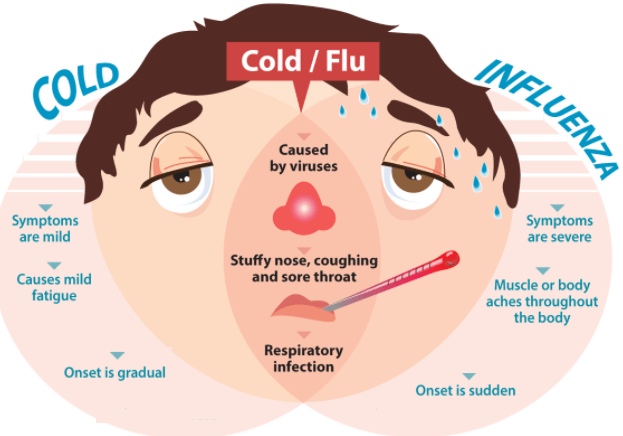
Influenza is a common cold that usually has a high mortality rate. It affects adults and children equally, but is especially severe in pregnant women, young children, elderly people, and those with certain medical conditions, such as HIV/AIDS. Health care workers are particularly vulnerable to the disease because they are in close contact with patients and often touch surfaces that are often infected. These individuals can transmit the virus to others, and should be protected by vaccination.
Influenza was first discovered through studies on animal diseases. In 1918, veterinarian J.S. Koen observed an epidemic in pigs, and suspected it was caused by a virus related to the Spanish influenza pandemic of the same name. In 1928, N. McBryde tried to transmit the virus from pig to pig, and succeeded. He instilled mucus from sick pigs’ respiratory tracts into the noses of healthy hogs. The resulting aerosol was filtered, which made it impossible to transfer viral particles from one host to another.
The influenza virus is contagious. Virus particles are passed to other people via contact with respiratory fluids. Infected individuals can spread the virus by inhaling airborne viruses or touching surfaces that contain infected fluids. The infection can take up to seven to ten days, but in some cases, it may become more serious and cause complications such as pneumonia. The influenza virus is spread through droplets that are produced by the infected individual’s coughs, sneezes, and talking. The infected person’s droplets are propelled into the air and are then deposited on the nearby people’s mouths. This is known as contact transmission of influenza.
The influenza virus is a type of orthomyxovirus. It measures 80 to 120 nanometers in diameter and is characterized by a characteristic envelope that contains two types of glycoproteins in spike form. Haemagglutinin spikes attach to red blood cells and other host cells. A viral enzyme, neuraminidase, cleaves terminal sialic acid residues in the host cell membrane, which facilitates the release of the infectious virus progeny. This process is also responsible for the disease’s spread from one cell to another.
The influenza virus is a bacterium that causes a cold. It is very contagious and can cause several complications. Symptoms of influenza vary in severity and can last up to ten days. A doctor should treat you for a flu shot as soon as you can. The virus can also aggravate pre-existing conditions. If you are exposed to the virus, it can cause more serious health problems. Infections with this virus is highly contagious.

The influenza virus is a virus that is highly contagious. The first recorded pandemic occurred in 1580, in Italy. In this year, there were 58 million cases of influenza. The number of cases of this virus is growing rapidly. There are also a variety of other complications, such as heart problems and respiratory failure. This is a common respiratory disease that requires proper care. The first symptoms of an influenza epidemic are pronounced chills and fever.
The virus’s spherical shape is made up of two types of glycoproteins called haemagglutinininin and neuraminidase. These two proteins attach to the cells of the body. This means that influenza can spread from one person to another. However, it is important to treat influenza quickly. In addition to flu treatment, you should also consult a doctor for a long-term cure.
The influenza virus is a highly contagious respiratory illness caused by various viruses. The virus is known as orthomyxovirus. Its diameter is 80-120 nanometers. Its shell consists of two types of glycoproteins in a spike-like form. Hemagglutinin spikes bind to erythrocytes, while the protein neuraminidase cleaves membrane-bound glycoproteins. Once a virus enters a cell, the virus is transmitted from one cell to another.
This is a very deadly infection caused by the influenza virus. This is the most common cause of a bacterial infection and has been around for thousands of years. The virus has many different strains that cause disease. Some are more contagious than others, but most are easy to prevent. When a person gets the flu, they are susceptible to all subtypes. That’s why the vaccine is so important. You can find out how to increase your immunity and how to properly prevent diseases on the health website prende.